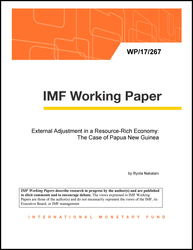
External Adjustment in a Resource-Rich Economy: The Case of Papua New Guinea
How should resource-rich economies handle the balance of payments adjustment required after
commodity price declines? This paper addresses the question theoretically by developing a
simple two-period multi-sector model based on Nakatani (2016) to compare different exchange
rate policies, and empirically by estimating elasticities of imports and commodity exports with
respect to exchange rates using Papua New Guinean data. In the empirical part, using various
econometric methods, I find the statistically significant elasticities of commodity exports to real
exchange rates. In the theoretical part, by introducing the notion of a shadow exchange rate
premium, I show how the rationing of foreign exchange reduces consumer welfare. Using the
estimated elasticities and theoretical outcomes, I further discuss policy implications for resource-rich
countries with a focus on Papua New Guinea.
Publication date: December 2017
ISBN: 9781484325063
$18.00
Add to Cart by clicking price of the language and format you'd like to purchase
Available Languages and Formats
| English |
Prices in red indicate formats that are not yet available but are forthcoming.
Topics covered in this book
This title contains information about the following subjects.
Click on a subject if you would like to see other titles with the same subjects.
Commodity Exporters , Elasticities , Foreign Reserve , Invervention , Cointegration , ECM , ARDL , TSLS , Intervention , Open Economy Macroeconomics , Agriculture in International Trade
Summary
Copyright © 2010 - 2024
Powered by:
AIDC



